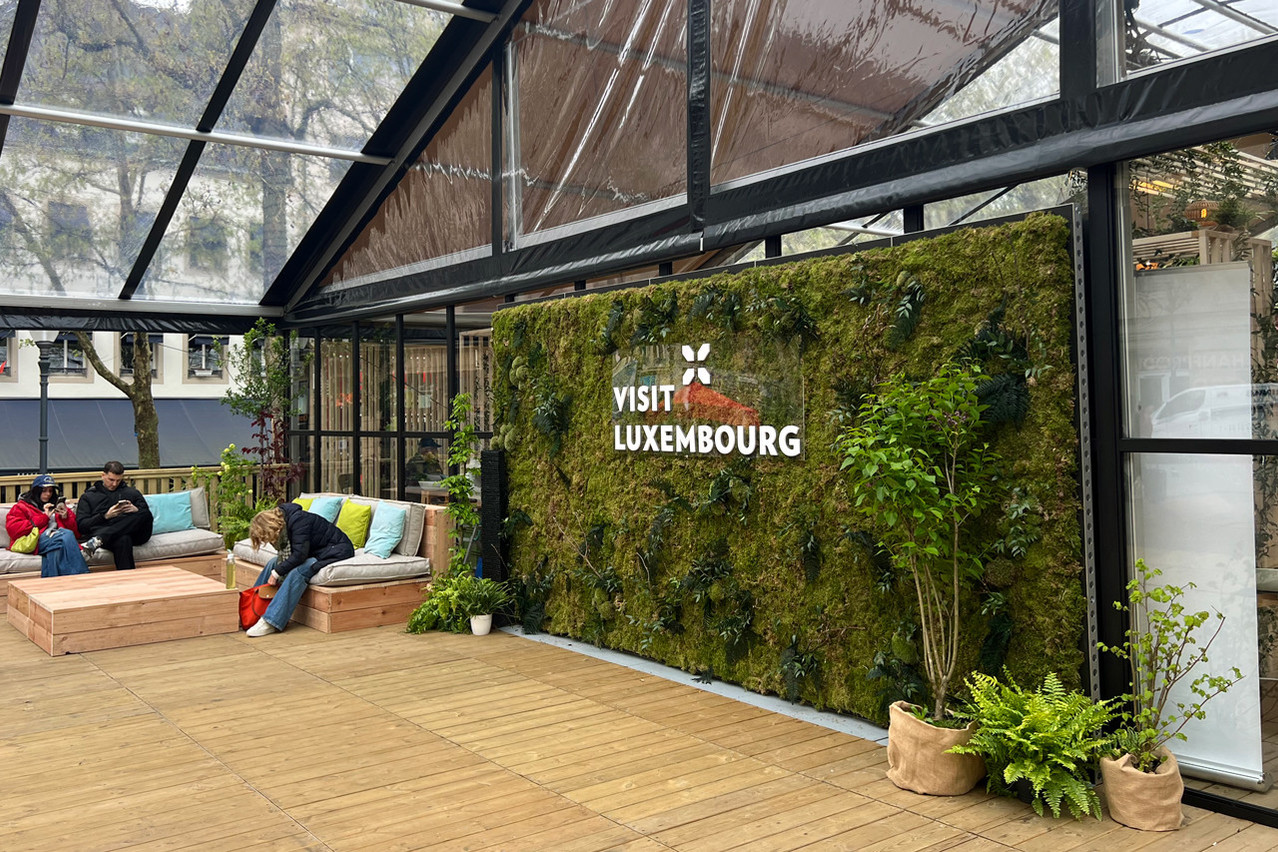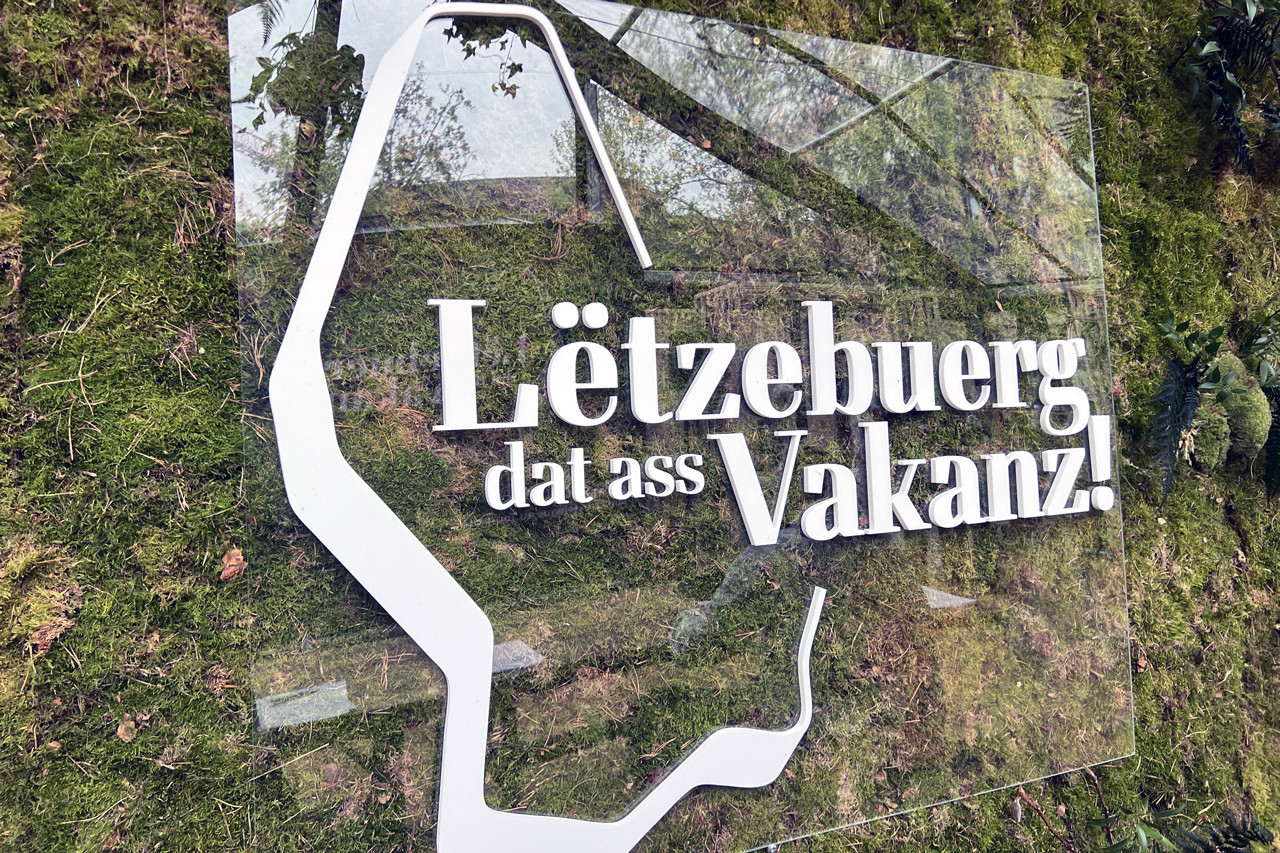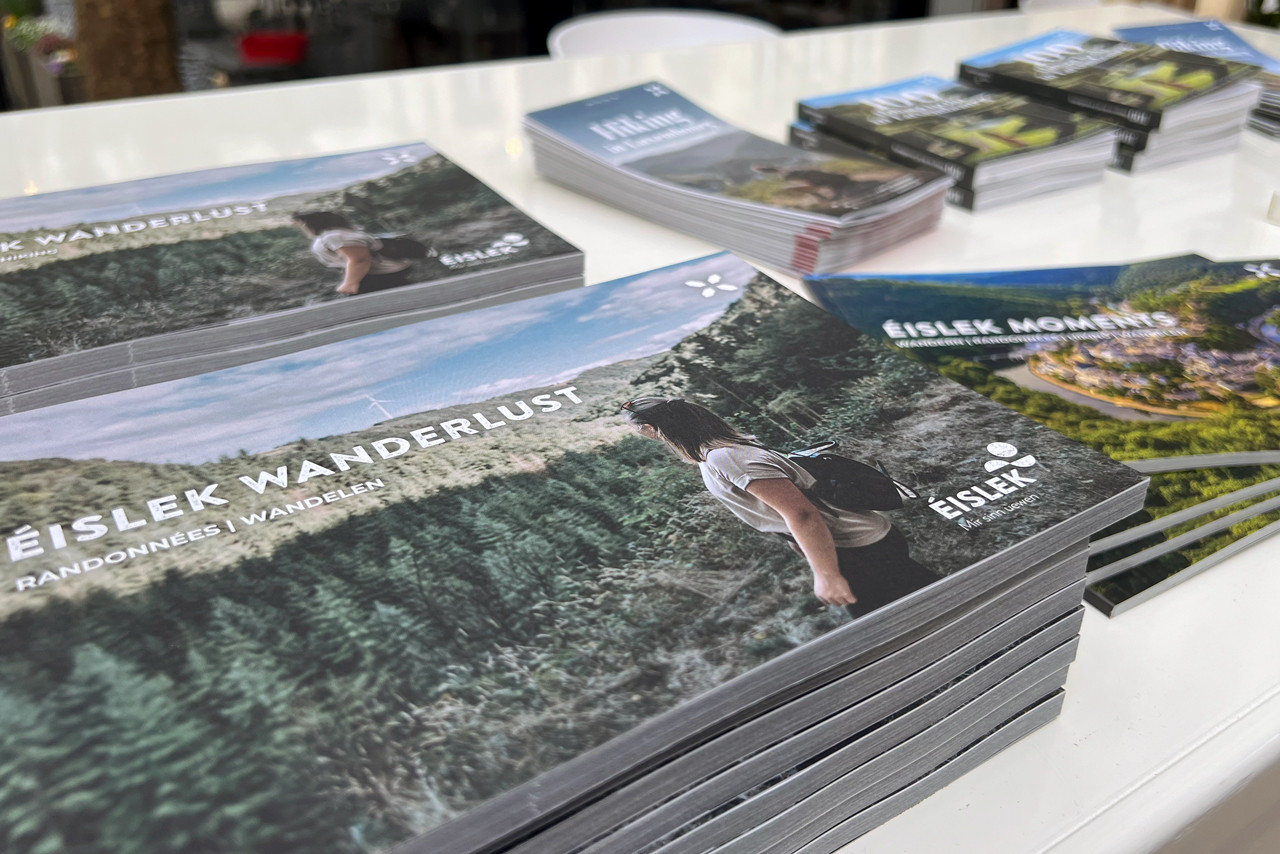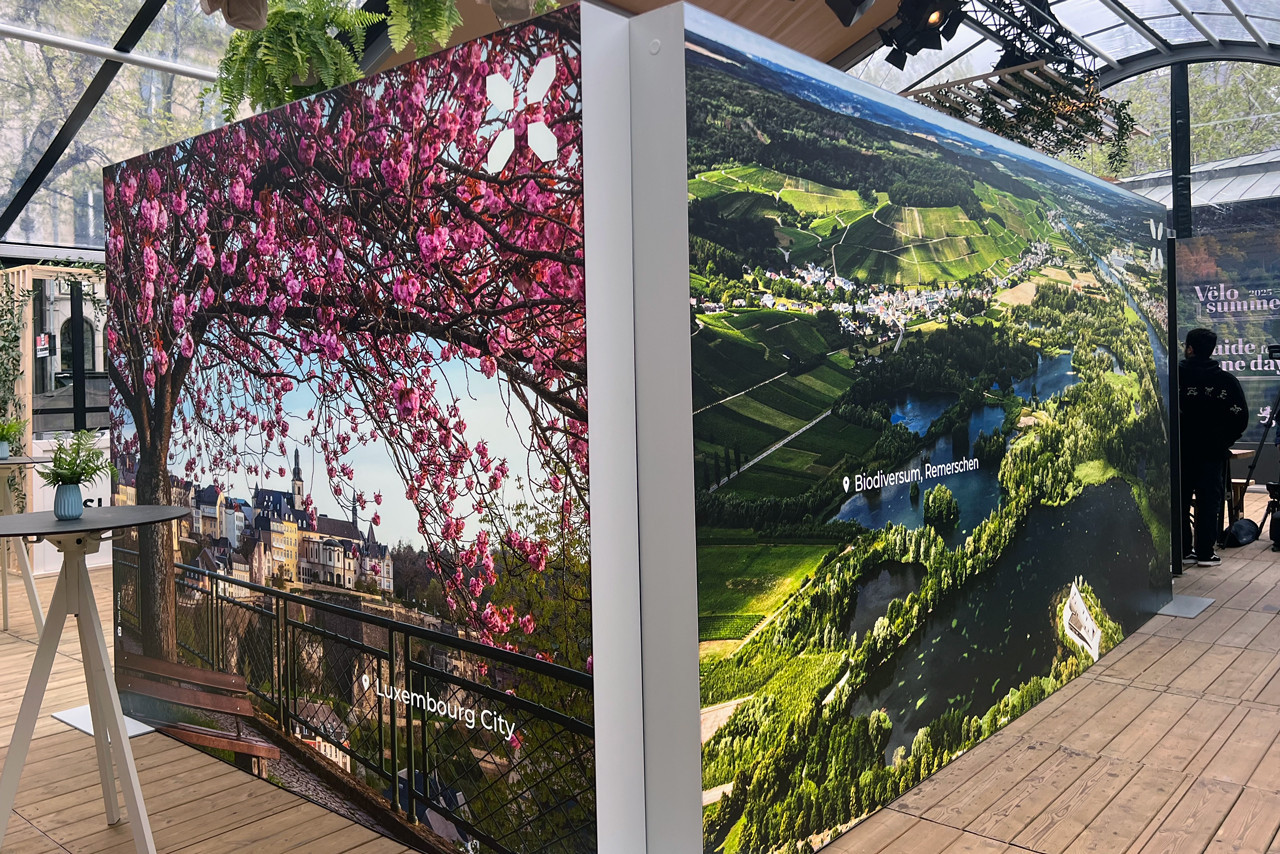Trail, hike, walks, bike, wander... These are the words that adorned the covers of the tourist brochures at the Visit Luxembourg stands on Friday 25 April. The “Lëtzebuerg, dat ass Vakanz!” campaign was officially launched in the presence of the minister delegate for tourism, (DP), and the mayor of the City of Luxembourg, (DP). Each little stand boasted a terroir, products--often alcoholic--and above all, paths, those that wind their way through the whole country. And at the heart of this 2025 edition was a simple promise: to put Luxembourg’s nature in the spotlight.
Natural heritage is the theme chosen for this year’s campaign. Following in the footsteps of gastronomy, active tourism and cultural tourism, the country wants as many people as possible to rediscover its forests, rivers, lakes and parks. “Every year, we highlight a new aspect of our tourism offering. In 2025, it will clearly be nature, in all its beauty and diversity,” said Thill. Nature as a setting for escape, but also as a lever for attractiveness: sustainability remains at the heart of the strategy.
The government’s strategy has not changed: the grand duchy continues to target “active nature lovers” and “explorers” profiles. And to appeal to them, two major projects will punctuate the summer: the Vëlosummer, which this year will offer 14 itineraries covering more than 500 km, and the Guide for a Day, a participatory programme that allows any local to show off a place they love.
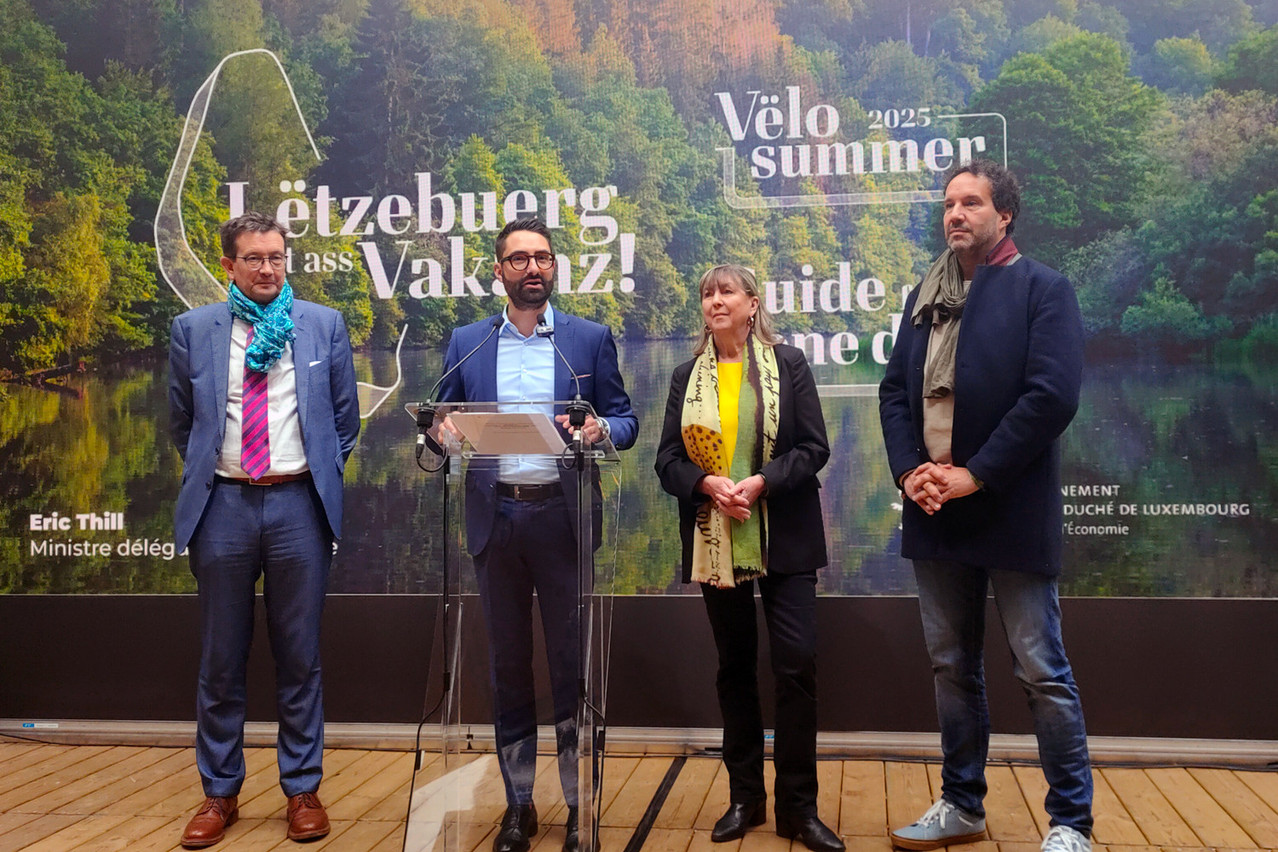
Minister Éric Thill (speaking) and Luxembourg City’s mayor Lydie Polfer (second from right) came to launch Luxembourg’s “holiday season.” Photo: Emilio Naud/Maison Moderne
More and more Dutch visitors
It was also a good time to take stock. Tourism in Luxembourg is doing well--very well indeed. In 2024, the country recorded 3.6m overnight stays, 3.7% more than the previous year. Arrivals rose by 6.3% to 1.5m visitors. These figures were driven as much by foreign tourists--mainly from Germany, the Netherlands and France--as by residents, who were also attracted by local holidays. The number of Dutch tourists has risen by 15% in a year, the number of French tourists by 10% and the number of Belgian tourists by 6%. “Luxembourg is now one of the ten European destinations with the strongest growth since 2019,” said the Minister. On average, tourists spend 1.8 nights in hotels, 1.9 in youth hostels and up to 4.1 in campsites, confirming Luxembourg’s appeal for short breaks, especially in the countryside. The was the country’s most visited attraction, followed by the Château de Vianden (which set a new record with 268,000 visitors).
The (Luga) exhibition, which opens on 7 May, will provide a link between the city and the environment. In this setting, the capital plays a showcase role. “The City of Luxembourg represents only 2% of the national territory, but half of this surface is green,” said Polfer. “With the Luga, we will be able to show this heritage in a new, creative light, and I think that many visitors will leave with a renewed image of the city.”
Added to this are a series of key events: the to Schengen on 14 June, marking the 40th anniversary of the Schengen agreement, or a gravel bike race in the Eislek on 21 June, allowing participants to qualify for the world championships.
The ambition is clear: to make Luxembourg a destination that is natural, sustainable, local and yet still to be discovered. “Tourism is not just an economic lever, it is also a powerful vector of image for our country,” concluded Thill.
The initial figures for 2025 point to a promising season, with increasing bookings, longer stays and growing interest in both campsites and nature-based getaways. True to its strategy, Luxembourg is attracting more and more explorers in search of proximity, authenticity and greenery. It remains to be seen whether the summer will confirm these fine prospects.
This article was originally published in .
